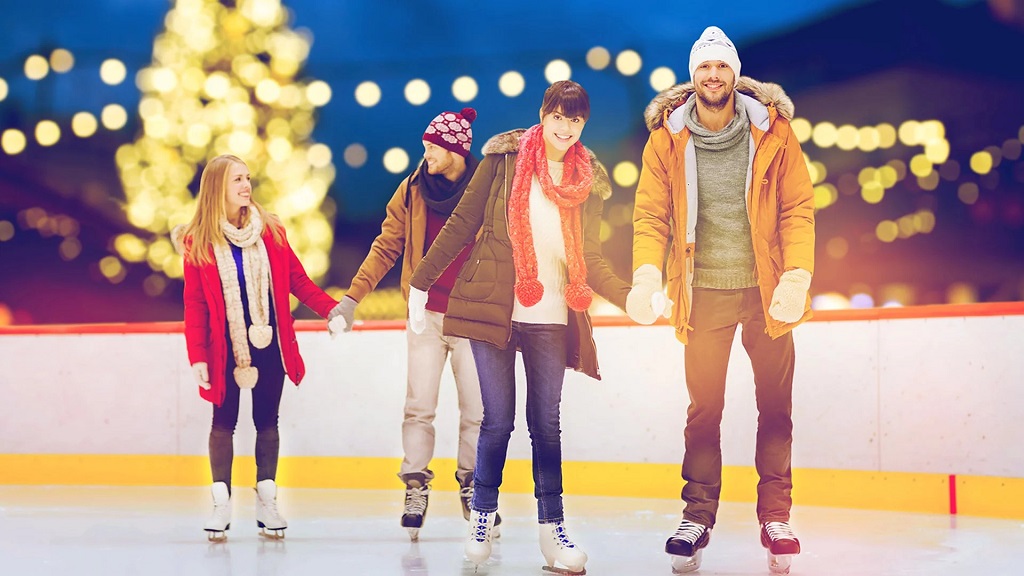As the winter season approaches, many people are excited to partake in outdoor activities such as ice skating. However, the weather conditions may not always be suitable for outdoor skating, which is why indoor rinks have become increasingly popular.
Whether you’re a beginner or an experienced skater, knowing what to wear for indoor ice skating is important for both comfort and safety. In this guide, we’ll discuss the necessary attire and equipment to ensure a fun and enjoyable indoor ice skating experience.
Why Indoor Ice Skating?
Indoor ice skating rinks offer a controlled environment that is not affected by weather conditions. This means you can enjoy skating without worrying about rain, snow or temperature changes. Indoor rinks are also well-maintained, providing smoother and safer ice surfaces for skating.
Moreover, indoor rinks offer a variety of activities such as lessons, competitions, and public skating sessions. They also often have amenities like skate rentals, snack bars, and heated lounges to enhance your overall experience.
What to Wear
When it comes to dressing for indoor ice skating, comfort and flexibility are key. You want to make sure your clothing allows for ease of movement while keeping you warm on the ice. Here are the essential items to wear for indoor ice skating:
1. Warm Layers
It’s important to dress in layers as it allows you to adjust your body temperature as needed. Start with a thin, moisture-wicking base layer made of materials such as wool or synthetic fabrics. This will help keep you dry and insulated while skating.
Next, for the best skateboards for big guys, add a mid-layer such as a fleece or wool sweater for extra warmth. Finally, top it off with a thin but warm jacket to protect you from the cold rink air.
2. Comfortable Pants
For pants, opt for flexible and comfortable materials that allow you to move freely on the ice. Leggings, yoga pants, or sweatpants are all great options. Avoid wearing jeans as they can restrict movement and become uncomfortable when wet. Discover What Not to Do When Skateboarding.
3. Thick Socks
Wearing thick socks is essential to keep your feet warm and comfortable while skating. Look for socks made of materials such as wool or synthetic fabrics that provide insulation and moisture-wicking properties.
Avoid cotton socks as they tend to absorb moisture and can lead to cold, damp feet.
4. Gloves or Mittens
Cold hands can quickly ruin an ice skating experience, so be sure to wear gloves or mittens to keep your fingers warm. Opt for water-resistant materials such as fleece, wool, or synthetic fabrics that will provide insulation and protect your hands from the cold.
5. Helmet
While helmets are not always mandatory for indoor ice skating, they are highly recommended especially for beginners or children. Falling on the ice can cause serious head injuries, so wearing a helmet can provide an extra layer of protection and give you peace of mind while skating.
6. Skates
Of course, the most important piece of equipment for indoor ice skating is your skates. You can either rent skates at the rink or bring your own if you have them. If renting, be sure to arrive early as sizes may be limited.
If you’re purchasing your own skates, make sure they fit snugly but comfortably and provide adequate ankle support. Lace them tightly to avoid any blisters or discomfort while skating.
Additional Tips
- Avoid wearing bulky or loose clothing as it can interfere with your movement and potentially cause accidents on the ice.
- It’s a good idea to bring an extra pair of socks in case your feet get wet or cold while skating.
- If you’ll be skating for an extended period, consider bringing a small bag with water and snacks to stay hydrated and energized.
- Don’t forget to wear a face mask or scarf to protect your face from the cold air, especially when skating at higher speeds.
Conclusion
Indoor ice skating is a fun and exciting activity for people of all ages. By dressing appropriately, you can ensure a comfortable and safe experience on the ice. Remember to dress in layers, wear comfortable clothing, and protect your head, hands, and feet with the necessary equipment.
So next time you’re planning to go ice skating indoors, make sure to follow our guide and enjoy your time on the ice! So next time you’re planning to go ice skating indoors, make sure to follow our guide and enjoy your time on the ice!
FAQs
Q: Can I wear a dress or skirt for indoor ice skating?
A: While it may be tempting to dress up, it’s best to avoid wearing dresses or skirts while skating. They can get in the way and make it difficult to move freely on the ice.
Q: Do I need special socks for ice skating?
A: No, any thick, moisture-wicking socks will do. Just make sure they are comfortable and provide insulation.
Q: Can I wear my regular sneakers for indoor ice skating?
A: No, it’s important to wear proper ice skates for indoor ice skating. Regular sneakers do not have the necessary blades and support for skating on ice.
Q: What should I do if my feet get cold while skating?
A: Take a break and go to the heated lounge or snack bar to warm up your feet. You can also put on an extra pair of socks for added insulation.
Q: Is it necessary to wear a helmet for indoor ice skating?
A: While not always mandatory, wearing a helmet is highly recommended, especially for beginners or children. It provides an extra layer of protection in case of falls on the ice.






